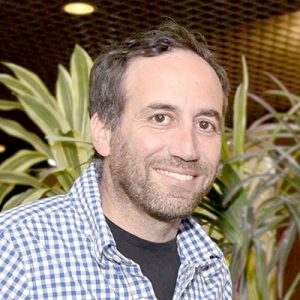
We explore the (human) experiencing-self and its relations to the surrounding environment: the space around us, the events that make up our life and future plans, the people we encounter along the way and the concepts we develop throughout. We explore the psychological, computational and neural mechanisms supporting these relations and their role in neuropsychiatric disorders, with specific focus on Alzheimer’s disease.
Our Group
We are a group of neuroscientists, clinicians and computer scientists interested in exploring the (human) experiencing-self and its relations to the surrounding environment: the space around us, the events that make up our life and future plans, the people we encounter along the way and the concepts we develop throughout. We explore the psychological, computational and neural mechanisms supporting these relations and their role in neuropsychiatric disorders, with specific focus on Alzheimer’s disease.
Our Approach
Our interdisciplinary approach is influenced by psychological theories, geometrical thinking and clinical observations, translated into meticulously designed neuropsychological and functional neuroimaging experiments. We endeavor to conduct ecologically valid studies in both the real and virtual worlds and apply machine-learning tools to derive meaningful and valid conclusions.
Our Goal
We hope to generate novel theoretical, computational and neural understandings of the mechanisms involved in these orientation processes as well as design useful tools to help people and patients orient and re-orient themselves in our dynamic world.
The human experience is situated in space (here), time (now) and person (self, body). Nonetheless, we can vividly imagine ourselves navigating to other locations, we can re-experience past events as well as simulate future ones and we can picture ourselves in another person’s shoes. These high-order mental abilities rely on two fundamental cognitive functions: self-projection and orientation. While the former refers to our ability to deliberately disengage from the here, now or self and “mentally travel” to a specific location, moment or perspective, the latter is defined as the tuning between ourselves and the internal representation we form of the external world. The way in which we generate these internal representations, also dubbed as “cognitive maps” or “mental models”, and their underlying characteristics has recently become a heavily researched topic. At our lab we focus our research questions on the relations between these cognitive maps and the behaving self: Is orientation in space, time and person mediated by three separate neurocognitive faculties or do they rely on a similar metric system? How is the interplay between the experiencing-self and the represented-self managed? Do the neural mechanisms supporting orientation and self-projection extend beyond the spatial, temporal and social domains? Are notable landmarks, important events and significant others represented differently than negligible ones? How do we represent different spatial and temporal scales simultaneously and alternate between them interchangeably? By means of behavioral and functional neuroimaging studies we investigate these questions, with special interest in its relevance to clinical symptoms seen in various brain disorders.
Peer, M., Salomon, R., Goldberg, I., Blanke, O., & Arzy, S. (2015). Brain system for mental orientation in space, time, and person. Proceedings of the National Academy of Sciences, 112(35), 11072-11077
Peer, M., Ron, Y., Monsa, R., & Arzy, S. (2019). Processing of different spatial scales in the human brain. Elife, 8, e47492
Monsa, R., Peer, M., & Arzy, S. (2020). Processing of Different Temporal Scales in the Human Brain. Journal of Cognitive Neuroscience, 32(11), 2087-2102
Peer, M., Hayman, M., Tamir, B., & Arzy, S. (2021). Brain coding of social network structure. Journal of Neuroscience, 41(22), 4897-4909
Hayman, M., & Arzy, S. (2021). Mental travel in the person domain. Journal of Neurophysiology
Alzheimer’s disease (AD) is an incurable, progressive degenerative neurological disorder causing immense suffering for patients and families. Accurately diagnosing the disease at an early stage is critical for intervention before extensive neuronal death takes place. We address this challenge by redefining AD as an orientation disorder (rather than a memory or general cognition disorder, as is widely accepted). An orientation test developed in our lab, which tests for orientation in the domains of space, time and person was shown to be highly sensitive for the classification of patients in different stages on the Alzheimer’s disease continuum. This test challenges the orientation brain system which highly overlaps the regions of the brain affected by the disease. A highly personal character of orientation can only now be addressed thanks to developments in AI, databases such as social media, and ML tools, which are enabled through an AI system we developed ‘Clara’ (claramind.com). Clara also enables mass-screening of the preclinical population for very early diagnosis. Moreover, the test provides important scientific understanding of the disease’s underlying neurocognitive and molecular mechanisms by demonstrating the monotonic decline of orientation in the entorhinal cortex and parallel hyperactivation of the medial temporal system in early stages, which later on decline. Our overarching goal is (1) to provide accurate, early AD-detection methods that are easy to administer to mass scanning at an early stage, and (2) to provide a clear and insightful neuroscientific basis to these methods and consequently, the nature of AD.
Peters-Founshtein, G., Peer, M., Rein, Y., Kahana Merhavi, S., Meiner, Z., & Arzy, S. (2018). Mental-orientation: A new approach to assessing patients across the Alzheimer’s disease spectrum. Neuropsychology, 32(6), 690
Dafni‐Merom, A., Peters‐Founshtein, G., Kahana‐Merhavi, S., & Arzy, S. (2019). A unified brain system of orientation and its disruption in Alzheimer’s disease. Annals of clinical and translational neurology, 6(12), 2468-2478
The concepts of agency of one’s actions and ownership of one’s experience have proven useful in relating body representations to bodily consciousness. Recently, we have applied these concepts to mental maps. Under this framework, agency is defined as ‘the sense that I am the one who is generating the experience represented on a mental map’, entailing beliefs, priors or inductions; ownership is defined as ‘the sense that I am the one who is undergoing an experience, represented on a mental map’, entailing the personal, self-referenced processing of information encountered. We endeavor to examine the roles of agency and ownership and their underlying neurocognitive and computational mechanisms.
Arzy, S., & Schacter, D. L. (2019). Self-agency and self-ownership in cognitive mapping. Trends in cognitive sciences, 23(6), 476-487
Arzy, S., & Dafni-Merom, A. (2020). 20 Imagining and Experiencing the Self on Cognitive Maps. The Cambridge Handbook of the Imagination, 311
Dafni-Merom, A., & Arzy, S. (2020). The radiation of autonoetic consciousness in cognitive neuroscience: a functional neuroanatomy perspective. Neuropsychologia, 143, 107477
Arzy, S. (2021). Agency, Ownership and the Potential Space. Brain Sciences, 11(4), 460
Some of the fundamental studies in the development of the vertebrate nervous system were done using chick embryos as a model organism. These include the basic principles of neural tube patterning, neuronal cell fate determination, apoptosis, and axon guidance. The accessibility of the chick spinal cord, and the ability to surgically manipulate it, together with the evolutionary conservation of many sensorimotor circuits, make the chick embryo an ideal model system for deciphering the sensorimotor connectome. However, the lack of adequate genetic means for gene targeting in the chick embryo has hampered its use as a model organism. We have developed a unique collection of molecular tools, enabling the identification and molecular and physiological manipulation of specific neuronal circuits in the spinal cord that surmount that obstacle (Avraham et al., 2010b; Hadas et al., 2014; Hadas et al., 2013). The accessibility of the embryo and the ability to surgically and genetically manipulate the nervous system in vivo renew now the chick as a model system for studying the role of neuronal circuits in physiology and behavior. We shared the toolbox and generated new project-designated tools with other groups (Escalante et al., 2013; Lahaie et al., 2019; Mansour et al., 2014; Nitzan et al., 2013).
Avraham, O., Zisman, S., Hadas, Y., Vald, L., and Klar, A. (2010b). Deciphering axonal pathways of genetically defined groups of neurons in the chick neural tube utilizing in ovo electroporation. J Vis Exp.
Escalante, A., Murillo, B., Morenilla-Palao, C., Klar, A., and Herrera, E. (2013). Zic2-dependent axon midline avoidance controls the formation of major ipsilateral tracts in the CNS. Neuron 18, 1392-1406.
Hadas, Y., Etlin, A., Falk, H., Avraham, O., Kobiler, O., Panet, A., Lev-Tov, A., and Klar, A. (2014). A ‘tool box’ for deciphering neuronal circuits in the developing chick spinal cord. Nucleic acids research 42, e148.
Hadas, Y., Nitzan, N., Furley, A.J.W., Kozlov, S.V., and Klar, A. (2013). Distinct Cis Regulatory Elements Govern the Expression of TAG1 in Embryonic Sensory Ganglia and Spinal Cord. PLoS One 8, e57960.
Lahaie, S., Morales, D., Bagci, H., Hamoud, N., Castonguay, C.E., Kazan, J.M., Desrochers, G., Klar, A., Gingras, A.C., Pause, A., et al. (2019). The endosomal sorting adaptor HD-PTP is required for ephrin-B:EphB signalling in cellular collapse and spinal motor axon guidance. Sci Rep 9, 11945.
Mansour, A., Khazanov-Zisman, S., Y., N., Klar, A., and Ben-Arie, N. (2014). Nato3 plays an integral role in dorsoventral patterning of the spinal cord by segregating floor plate/p3 fates via Nkx2.2 suppression and Foxa2 maintenance. Development.
Nitzan, E., Krispin, S., Pfaltzgraff, E.R., Klar, A., Labosky, P.A., and Kalcheim, C. (2013). A dynamic code of dorsal neural tube genes regulates the segregation between neurogenic and melanogenic neural crest cells. Development (Cambridge, England) 140, 2269-2279.
ISF, GIF, FP7, NIH, IPMP, Templeton, International collaborations, and more.
Hayman, M., & Arzy, S. (2021). Mental travel in the person domain.
Journal of Neurophysiology, 126(2), 464-476. https://doi.org/10.1152/jn.00695.2020
“Mental travel” is a cognitive concept embodying the human capacity to intentionally disengage from the here and now, and mentally experience the world from different perspectives. We explored how individuals mentally “travel” to the point of view (POV) of other people in varying levels of personal closeness and from these perspectives process these people’s social network. Under fMRI, participants were asked to “project” themselves to the POVs of four different people: a close other, a nonclose other, a famous-person, and their own-self, and rate the level of affiliation (closeness) to different individuals in the respective social network. Brain activity at the medial prefrontal and anterior cingulate cortex in the self-POV was higher, compared with all other conditions. Activity at the right temporoparietal junction and medial parietal cortex was found to distinguish between the personally related (self, close, and nonclose others) and unrelated (famous-person) people. Representational similarity analysis implicated the left retrosplenial cortex as crucial for social distance processing across all POVs. These distinctions suggest several constraints regarding our ability to adopt others’ POV and process not only ours but also other people’s social networks and stress the importance of proximity in social cognition.
Peer, M., Hayman, M., Tamir, B., & Arzy, S. (2021). Brain coding of social network structure.
Journal of Neuroscience, 41(22), 4897-4909. https://doi.org/10.1523/JNEUROSCI.2641-20.2021
Each of us has a social network composed of hundreds of individuals, with different characteristics and different relations among them. How does our brain represent this complexity? To find out, we mapped participants’ social connections using Facebook data and then asked them to think about individuals from their network while undergoing functional MRI scanning. We found that the position of individuals within the social network, as well as their affiliation to the participant, are mapped in the retrosplenial complex, a region involved in spatial processing. Individuals’ personality traits were coded in another region, the medial prefrontal cortex. Our findings demonstrate a neural dissociation among different aspects of social knowledge and suggest a link between spatial and social cognitive mapping.
Dafni-Merom, A., & Arzy, S. (2020). The radiation of autonoetic consciousness in cognitive neuroscience: a functional neuroanatomy perspective.
Neuropsychologia, 143, 107477. https://doi.org/10.1016/j.neuropsychologia.2020.107477
One of Endel Tulving’s most important contributions to memory research is the coupling of self-knowing consciousness (or “autonoesis”) with episodic memory. According to Tulving, autonoetic episodic memory enables the uniquely human neurocognitive operation of “mental time travel”, which is the ability to deliberately “project” oneself to a specific time and place to remember personally experienced events that occurred in the past and simulate personal happenings that may occur in the future. These ideas ignited an explosion of research in the years to follow, leading to the development of several related concepts and theories regarding the role of the human self in memory and prospection. In this paper, we first explore the expansion of the concept of autonoetic consciousness in the cognitive neuroscience literature as well as the formulation of derivative concepts and theories. Subsequently, we review such concepts and theories including episodic memory, mental time travel, episodic simulation, scene construction and self-projection. In view of Tulving’s emphasis of the temporal and spatial context of the experience, we also review the cognitive operation involved in “travel” (or “projection”) in these domains as well as in the social domain. We describe the underlying brain networks and processes involved, their overlapping activations and involvement in giving rise to the experience. Meta-analysis of studies investigating the underlying functional neuroanatomy of these theories revealed main overlapping activations in sub-regions of the medial prefrontal cortex, the precuneus, retrosplenial cortex, temporoparietal junction and medial temporal lobe. Dissection of these results enables to infer and quantify the interrelations in between the different theories as well as with respect to Tulving’s original ideas.
Saadon-Grosman, N., Arzy, S., & Loewenstein, Y. (2020). Hierarchical cortical gradients in somatosensory processing.
NeuroImage, 222, 117257. https://doi.org/10.1016/j.neuroimage.2020.117257
Sensory information is processed in the visual cortex in distinct streams of different anatomical and functional properties. A comparable organizational principle has also been proposed to underlie auditory processing. This raises the question of whether a similar principle characterize the somatosensory domain. One property of a cortical stream is a hierarchical organization of the neuronal response properties along an anatomically distinct pathway. Indeed, several hierarchies between specific somatosensory cortical regions have been identified, primarily using electrophysiology, in non-human primates. However, it has been unclear how these local hierarchies are organized throughout the cortex. Here we used phase-encoded bilateral full-body light touch stimulation in healthy humans under functional MRI to study the large-scale organization of hierarchies in the somatosensory domain. We quantified two measures of hierarchy of BOLD responses, selectivity and laterality. We measured how selectivity and laterality change as we move away from the central sulcus within four gross anatomically-distinct regions. We found that both selectivity and laterality decrease in three directions: parietal, posteriorly along the parietal lobe, frontal, anteriorly along the frontal lobe and medial, inferiorly-anteriorly along the medial wall. The decline of selectivity and laterality along these directions provides evidence for hierarchical gradients. In view of the anatomical segregation of these three directions, the multiplicity of body representations in each region and the hierarchical gradients in our findings, we propose that as in the visual and auditory domains, these directions are streams of somatosensory information processing.
Monsa, R., Peer, M., & Arzy, S. (2020). Processing of Different Temporal Scales in the Human Brain.
Journal of Cognitive Neuroscience, 32(11), 2087-2102. https://doi.org/10.1162/jocn_a_01615
While recalling life events, we reexperience events of different durations, ranging across varying temporal scales, from several minutes to years. However, the brain mechanisms underlying temporal cognition are usually investigated only in small-scale periods—milliseconds to minutes. Are the same neurocognitive systems used to organize memory at different temporal scales? Here, we asked participants to compare temporal distances (time elapsed since event) to personal events at four different temporal scales (hour, day, week, and month) under fMRI. Cortical activity showed temporal scale sensitivity at the medial and lateral parts of the parietal lobe, bilaterally. Activity at the medial parietal cortex also showed a gradual progression from large- to small-scale processing, along a posterior–anterior axis. Interestingly, no sensitivity was found along the hippocampal long axis. In the medial scale-sensitive region, most of the voxels were preferentially active for the larger scale (month), and in the lateral region, scale selectivity was higher for the smallest scale (hour). These results demonstrate how scale-selective activity characterizes autobiographical memory processing and may provide a basis for understanding how the human brain processes and integrates experiences across timescales in a hierarchical manner.
Saadon-Grosman, N., Loewenstein, Y., & Arzy, S. (2020). The ‘creatures’ of the human cortical somatosensory system.
Brain communications, 2(1), fcaa003. https://doi.org/10.1093/braincomms/fcaa003
Penfield’s description of the ‘homunculus’, a ‘grotesque creature’ with large lips and hands and small trunk and legs depicting the representation of body-parts within the primary somatosensory cortex (S1), is one of the most prominent contributions to the neurosciences. Since then, numerous studies have identified additional body-parts representations outside of S1. Nevertheless, it has been implicitly assumed that S1’s homunculus is representative of the entire somatosensory cortex. Therefore, the distribution of body-parts representations in other brain regions, the property that gave Penfield’s homunculus its famous ‘grotesque’ appearance, has been overlooked. We used whole-body somatosensory stimulation, functional MRI and a new cortical parcellation to quantify the organization of the cortical somatosensory representation. Our analysis showed first, an extensive somatosensory response over the cortex; and second, that the proportional representation of body parts differs substantially between major neuroanatomical regions and from S1, with, for instance, much larger trunk representation at higher brain regions, potentially in relation to the regions’ functional specialization. These results extend Penfield’s initial findings to the higher level of somatosensory processing and suggest a major role for somatosensation in human cognition.

Medical Doctor. PhD candidate
Cognitive principles of navigation in the social world
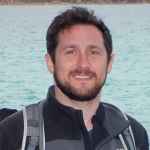
MD/PhD student
Specifications of the mental orientation system in health and disease
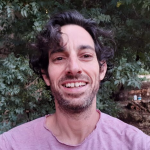
Lab Manager
Principle dimensions of the mental orientation system

MD/MSc
Brain system for categorization of narrative roles
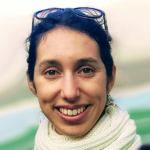
Graduate student in Medical Neurobiology
Age disorientation

PhD in Medical Neurobiology
Functional MRI Analyses in Neuropsychiatry
We are looking for motivated undergraduate students, with a strong background in computer science/mathematics/physics to get involved in new projects in the lab.
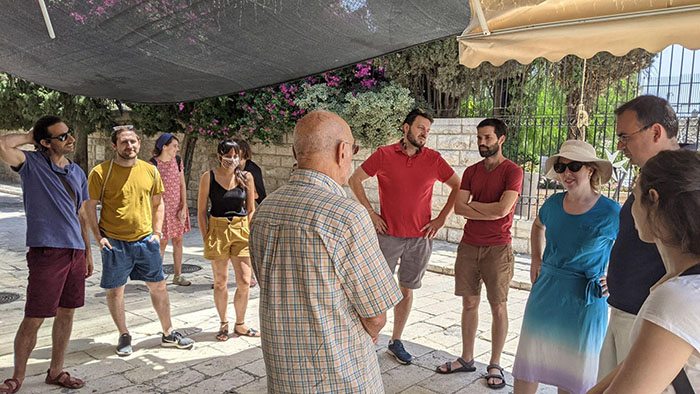
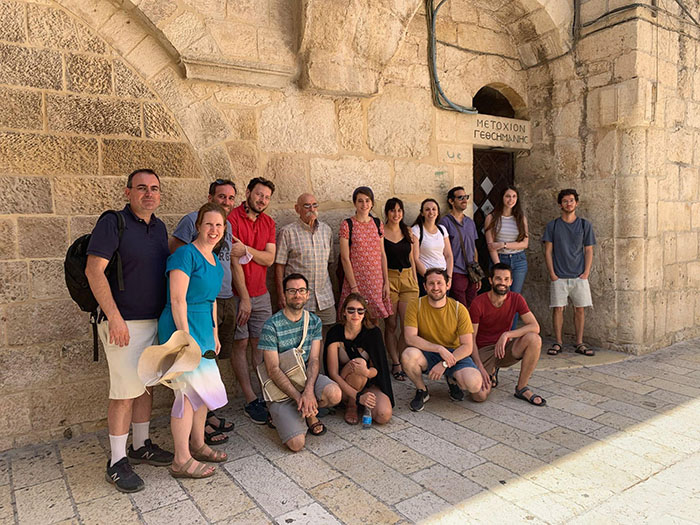

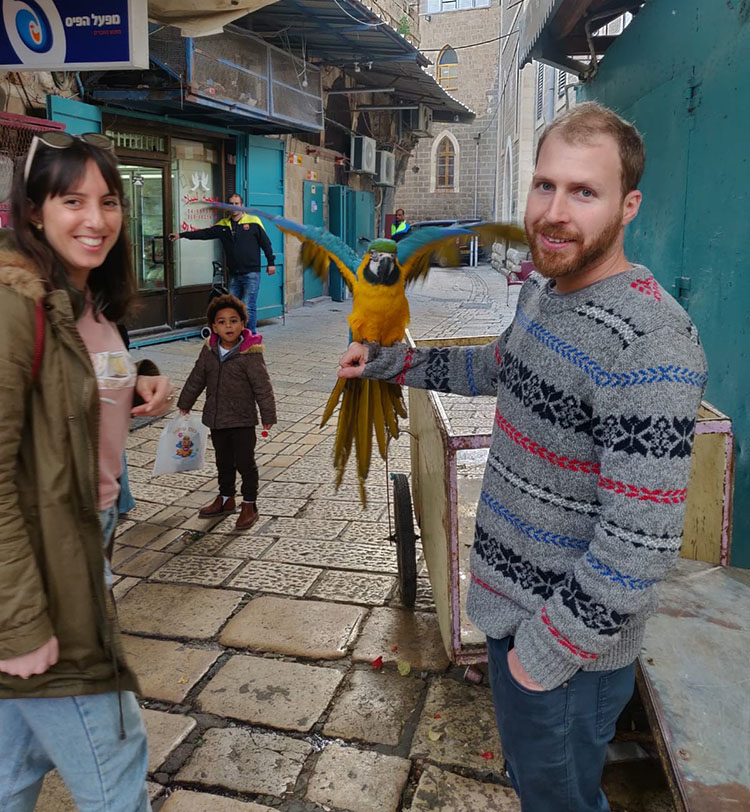
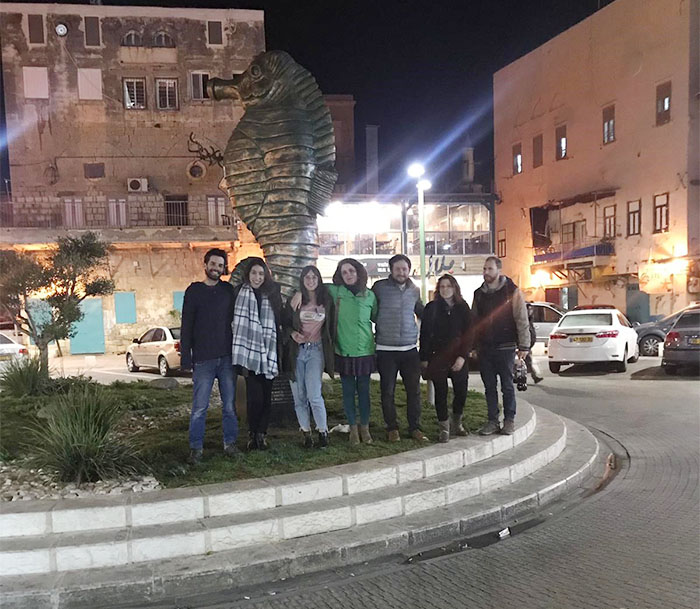
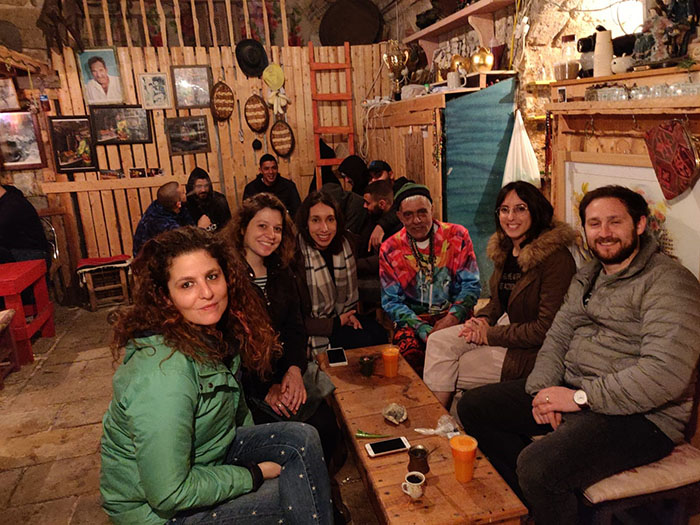
Website designed by toornet
Professor Shahar Arzy is a researcher in cognitive neuroscience (PhD) and a Board-Certified Clinical Neurologist (MD), specializing in cognitive/behavioral neurology and neuropsychiatry with particular interest in Alzheimer’s disease. He established the Computational Neuropsychiatry Lab at the Hebrew University, and the Neuropsychiatry Clinic at Hadassah Medical Center. He is currently an Associate Professor of Neurobiology at the Faculty of Medicine, Hebrew University of Jerusalem; Senior Neurologist and Associate Professor of Neurology, Hadassah Medical Center; Director of the Computational Neuropsychiatry Lab at the Hebrew University.
Moshe is a PhD candidate in the Computational Neuropsychiatry lab. He received his MD degree from the Hebrew University of Jerusalem after completing an internship at Hadassah Medical Center. Moshe has a rich experience in data analysis of various types, including working as an analyst at the bioinformatics unit of the university during his medical studies before turning to neuroscience. Moshe is interested in human social functions and dedicates his research to cognitive social networks, using fMRI to understand how we keep track of the different people in our life and the connections between them. When not in the lab, Moshe enjoys all kinds of music, playing the piano and watching movies.
Amnon Dafni-Merom is an MD-PhD candidate at the Computational Neuropsychiatry Lab. He received his B.Sc in Psychobiology with honors from the Hebrew University of Jerusalem. He subsequently joined the Medicine and Bio-medicine Research Program (“Marom” Program) for a combined MD-PhD training at the Hadassah Hebrew University Medical School, and began his direct PhD degree in the Department of Neurobiological Medicine under the supervision of Prof. Shahar Arzy. Amnon investigates the brain mechanisms underlying the relations between the behaving self and its cognitive representation of the world. He’s specifically interested in how these cognitive functions deteriorate in neurodegenerative disorders such as Alzheimer’s disease. Amnon enjoys trekking, playing board games and is a passionate FC Barcelona fan (Visca El Barça!).
Mordechai is a M.A student in neuroscience through the lab. He also received his B.Sc in mechanical engineering. He is also currently studying medicine at Ben Gurion University. Mordechai is interested in learning how the brain represents different aspects of the social domain and how this fits into the cognitive organization of knowledge about other domains, in relation to the self and to the world around. Alongside his research and studies, Mordechai enjoys raising his three daughters, reading, traveling and social gatherings.
Uri graduated from the Technion with honor before his military service (B.Sc. Electrical Engineering) and has worked a number of years in the Hi-Tech industry (Intel, Rafael, ForcePoint, and some startups) as an algorithm developer and a data scientist. In between he has spent some great years at the Jerusalem Academy of Music and Dance studying the classical guitar. He is enthusiastic about computational models and neural nets and is fascinated with their role in understanding the human self. Currently, he is working as the lab manager and has started his M.A in Neurobiology.
Splits his time between his urban TLV flat and his partner’s farm house on the hills with the peacocks on the roof. Uri loves rock climbing and bouldering, though he is still opting for his first 7a…